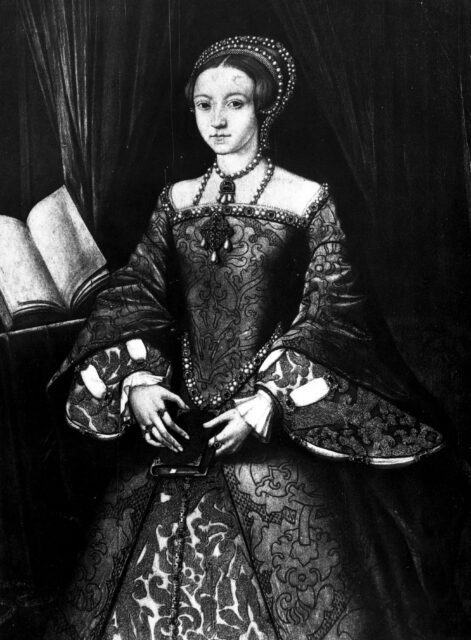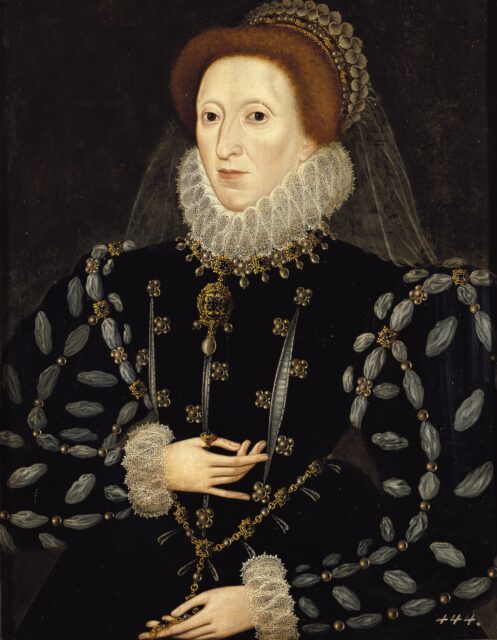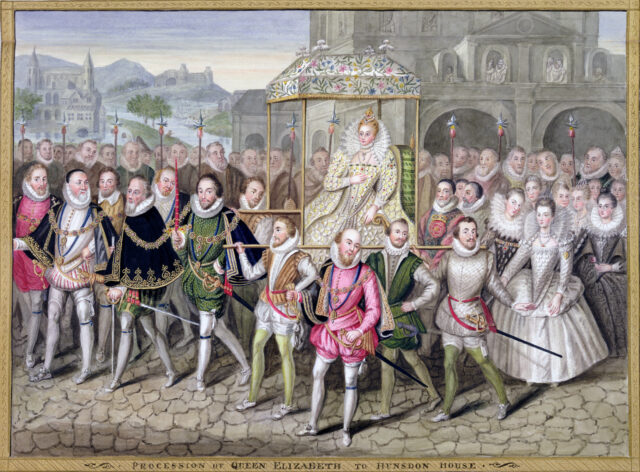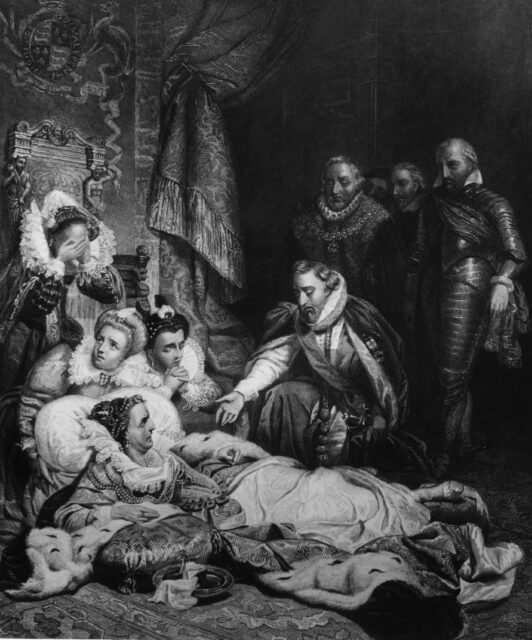Queen Elizabeth I, often referred to as the “Virgin Queen,” was a pivotal figure in English history. Her reign was marked by significant cultural growth and the flourishing of the arts, with figures like William Shakespeare and Christopher Marlowe rising to prominence. Her speeches and writings reflect her intelligence and eloquence, inspiring generations. Her astute political acumen and ability to navigate European politics’ complex web helped establish England as a major world power. Thanks to her, the Elizabethan Era remains a defining period in English history, largely due to her visionary leadership and enduring impact.
Early life and education of Queen Elizabeth I

Queen Elizabeth I, born on September 7, 1533, was the daughter of King Henry VIII and Anne Boleyn. From a young age, she was exposed to the intricacies of court life and the volatile political climate of Tudor England. Her early years were marked by her mother’s execution and her father’s subsequent marriages, which significantly influenced her upbringing. Despite these tumultuous beginnings, Elizabeth received a robust education, which was uncommon for women of her time. Her tutors, including the renowned scholar Roger Ascham, provided her with a strong foundation in languages, history, rhetoric, and philosophy.
Elizabeth’s education was not only comprehensive but also progressive for the era. She became fluent in several languages, including Latin, French, and Italian, which later proved invaluable during her reign. Her intellectual pursuits were encouraged by her stepmother, Catherine Parr, who ensured that Elizabeth and her half-sister, Mary, were well-educated. This rigorous academic training helped shape Elizabeth into a well-rounded and astute leader capable of navigating the complexities of governance and diplomacy. Her early life and education laid the groundwork for her future role as one of England’s most iconic and influential monarchs.
Her ascension to the throne

Queen Elizabeth I’s path to power was anything but straightforward, and her early life was marked by political turbulence and personal uncertainty. Following her mother’s execution, Elizabeth was declared illegitimate and removed from the line of succession. However, her fortunes changed with the death of her half-sister, Queen Mary I. Elizabeth’s intelligence, political acumen, and the support of key allies helped her navigate the treacherous waters of Tudor politics.
Upon ascending to the throne in 1558, Queen Elizabeth I faced numerous challenges, including religious conflict and threats from abroad. Her reign, however, marked the beginning of a golden age for England. Elizabeth skillfully balanced the interests of different factions and established a stable government. Her ability to inspire loyalty and her strategic use of marriage negotiations as diplomatic tools further solidified her position. Elizabeth’s reign not only brought stability but also fostered a cultural renaissance.
The Elizabethan religious settlement and Queen Elizabeth I’s impact on religion

Queen Elizabeth I’s reign marked a significant turning point in England’s religious landscape. Upon ascending the throne, she faced the daunting task of unifying a nation deeply divided by religious conflict. The Elizabethan Religious Settlement, introduced in 1559, was her strategic response to this challenge. This settlement aimed to establish a middle ground between Roman Catholicism and Protestantism, seeking to appease both factions. By reinstating the Act of Supremacy, she reasserted the monarch’s authority over the Church of England, while the Act of Uniformity standardized religious practices across the country.
The impact of Queen Elizabeth I’s policies was profound and enduring. Her pragmatic approach allowed for a degree of religious tolerance that was unprecedented at the time. While the settlement did not entirely eliminate religious tensions, it provided a framework that enabled England to avoid the kind of violent religious wars that plagued other European nations. Queen Elizabeth I’s legacy in this regard is one of moderation and diplomacy, setting a precedent for future governance and contributing to the relative stability and prosperity of the Elizabethan era. Her influence on religion was not just a matter of policy but a cornerstone of her broader vision for a united and resilient England.
Her defining military victory against the Spanish Armada

The clash with the Spanish Armada in 1588 stands as a pivotal moment in Queen Elizabeth I’s reign, showcasing her strategic acumen and the resilience of her navy. The formidable and vast Spanish fleet sought to overthrow Elizabeth and restore Catholicism in England. However, the English navy, smaller but more agile, employed innovative tactics and superior seamanship to outmaneuver the Spanish galleons. The victory not only thwarted Spain’s ambitions but also cemented England’s naval dominance.
Queen Elizabeth I’s leadership during this crisis was nothing short of inspirational. Her famous speech at Tilbury, where she declared her willingness to fight alongside her subjects, galvanized the nation. This triumph against the Spanish Armada not only secured her legacy as a formidable monarch but also ignited a sense of national pride and unity. The defeat of the Armada marked the beginning of a new era for England, paving the way for its emergence as a global maritime power.
Cultural flourishing under her reign

Queen Elizabeth I’s reign is often hailed as a golden age for the arts, a period where creativity and innovation flourished like never before. Under her patronage, the English Renaissance reached its zenith, with literature, music, and theater experiencing unprecedented growth. The queen herself was a great admirer of the arts, and her court became a vibrant hub for poets, playwrights, and musicians. This era saw the emergence of iconic figures such as William Shakespeare and Christopher Marlowe, whose works continue to be celebrated today. The queen’s support and encouragement played a crucial role in fostering an environment where artistic expression could thrive.
Theater, in particular, saw a remarkable transformation during Queen Elizabeth I’s time. The establishment of permanent playhouses, like The Globe, provided a venue for the burgeoning talent of the era. These spaces became cultural landmarks where the public could enjoy the latest plays, often reflecting the complexities and intrigues of Elizabethan society. The queen’s interest in drama and performance elevated the status of playwrights and made theater an integral part of English culture.
Political strategies and diplomacy of Queen Elizabeth I

Queen Elizabeth I was a master of political strategies and diplomacy, navigating a complex web of alliances and enmities with remarkable skill. Her reign was marked by a delicate balance of power, where she adeptly managed relationships with other European monarchs. By maintaining a cautious yet assertive stance, she ensured that England remained a formidable player on the international stage. Her ability to use marriage proposals as diplomatic tools, without committing to any, showcased her shrewdness in preserving England’s autonomy while keeping potential adversaries at bay.
In addition to her diplomatic finesse, Elizabeth’s domestic policies were equally strategic. She fostered a sense of national unity and identity, crucial for a country that had been torn apart by religious strife. By promoting a moderate form of Protestantism, she managed to appease both the more radical reformers and the traditionalists, thus avoiding the extremes that could lead to internal conflict. Her reign saw the establishment of a relatively stable and prosperous England, which in turn strengthened her position in negotiations with foreign powers. This blend of internal stability and external diplomacy was key to her long and successful reign.
Her personal life and relationships

Queen Elizabeth I, often referred to as the “Virgin Queen,” led a life that was as intriguing as it was solitary. Despite numerous suitors and political alliances proposed through marriage, she chose to remain unmarried, a decision that has sparked much historical debate. Her close relationships with key figures like Robert Dudley, Earl of Leicester, and Sir Walter Raleigh were often the subject of court gossip and speculation. Though deeply personal, these relationships were also politically significant, reflecting her ability to navigate the complexities of court life and international diplomacy.
Elizabeth’s personal life was marked by her profound intellect and emotional resilience. She maintained a close-knit circle of advisors and confidants who supported her reign and provided companionship. Her bond with her childhood friend and cousin, Mary, Queen of Scots, was particularly complex, blending familial affection with political rivalry. Elizabeth’s ability to balance these personal connections with her duties as a monarch underscores her exceptional leadership and the intricate nature of her reign.
The enduring legacy of Queen Elizabeth I

More from us: The Unseen Depths of Karen Friedman Hill’s Life Beyond “Goodfellas”
Queen Elizabeth I died on March 24, 1603, at the age of 69. Her reign left an indelible mark on history, shaping the future of England and influencing the world in countless ways. Her leadership during a time of religious conflict and political instability showcased her remarkable ability to navigate complex challenges with grace and intelligence.
Her legacy extends beyond her political and cultural achievements, as her dedication to her country has become emblematic of strong, independent leadership, laying the groundwork for future generations to build upon.
Join The Vintage Newsletter community today and unlock a treasure trove of weekly curated content, exploring nostalgia, history, and fascinating facts from the past.
